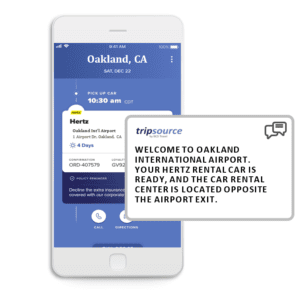
By Elise Coker, Senior Director
These days travelers have more options than ever for booking travel, and many like to take that decision into their own hands. That’s a big issue for travel managers who spend time negotiating a hotel program but then see attachment rates of 50% or less.
When that happens, you lose leverage with hotels and end up spending more for less. The solution: engage your travelers so they adopt and advocate for your program. After all, it doesn’t matter how good your hotel program is if your travelers aren’t using it.
Why Travelers are Ignoring Your Travel Program
There are many reasons why travelers may be ignoring your travel program. For a start, travelers value choice. They’re used to sourcing their personal travel online, so it makes sense to check out the options on the sites they already know and love. According to Advito’s research 78% of business travelers comparison shop on third-party travel websites.
Second, travelers are consumers and it’s human nature to want a good deal. If the preferred rates in your program don’t make sense to them and they don’t feel they’re getting value, they won’t book those ahead of an externally sourced rate that seems more cost effective.
And third, there’s the user experience. External providers know that user experience is everything, and it matters to your business travelers too. If your online booking tool (OBT) fails to provide a great user experience, travelers won’t want to use it.
4 Ways to Improve Your Program to Increase Adoption
But even if you’re struggling to engage travelers now, there are ways to turn this around. And that means putting yourself in the traveler’s shoes to make sure your program meets their needs. Here are four ways to do this.
1. Merchandise Your Preferred Options
A good starting point is to beat external booking tools at their own game. When you visit those tools, you see a screen full of information relevant to each traveler that directs visitors to the preferred choices. They explain what each offer is and why it’s a good idea.
If you want travelers to book a preferred hotel you’ve got to do the same thing. Make sure that when travelers look in your OBT they see the best, most relevant options first. It’s the same merchandising technique supermarkets use to encourage people to buy.
2. Raise Awareness with Digital Marketing
One of the keys to adoption and advocacy is offering relevant and reliable information. You can provide this with an internal digital marketing campaign. When you make your messaging consistent, you help travelers to make informed decisions and build trust.
Let people know about travel and accommodation options, incentives and amenities, and more. After all, if people don’t know what the options are, how can they book them?
3. Use Content to Encourage the Right Choices
Within the OBT you can use digital banners and messaging to highlight the best, closest or most cost-effective options for a given destination. For example, if you have a rate target for a particular destination, use OBT messaging to highlight when an option is within or outside the rate target. Travelers want to do the right thing, and if you let them know what’s expected and acceptable, they’ll generally be happy to comply.
Plus, make your content dynamic. There’s no point in showing the deal that was good last week because it’s likely changed. Keep your content up to date to show the best options to travelers at the time of booking.
4. Create a Seamless Experience
As technology develops, consumers expect a more seamless online experience. Your travel program has to deliver that if you want people to use it willingly.
That means removing the bottlenecks that stop people from making decisions. When you link searching, booking, and payment together, it makes it easy – and ease of use builds compliance and trust.

Does this really work? Yes, it does. A major food conglomerate increased use of its OBT by 40% by using traveler engagement strategies like infographics, digital signage and internal newsletters. And Finastra was able to get a 5:1 ROI by combining Traveler Engagement with merchandising to raise awareness and influence purchase decisions.
The bottom line is that if you want travelers to adopt and advocate for your program, using Traveler Engagement is a must. With the right content, you can deliver choice and build confidence for a more effective travel program.
